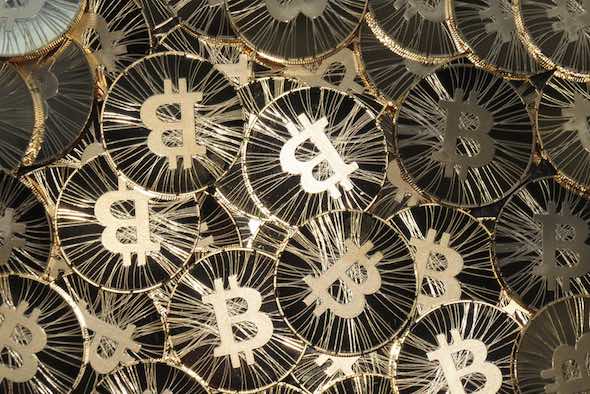
Bitcoin, the much-hyped cryptocurrency, made headlines recently for driving a surge in power use. Around the globe, digital entrepreneurs are ‘mining’ Bitcoins by solving complex math problems, using supercomputers to get the job done. Those supercomputers use a ton of power, which largely comes form coal- and gas-fired power plants spewing gobs of carbon pollution.
But, while hackers wreak havoc on the climate, blockchain, the bleeding-edge technology behind Bitcoin, could one day help clean up the mess. Climate wonks say blockchain has a role to play in the clean-energy economy, helping homeowners sell electricity, allowing businesses to trade carbon credits, and making it easier for governments to track greenhouse gas emissions.
To understand how it all works, let’s start with a quick explanation of blockchain.
Typically, if you want to send someone money over the internet, you need a third party to validate that transaction. That party, typically a bank, certifies you are not trying to send the same money to two different parties simultaneously, or otherwise trying to deceive the system. Blockchain allows users to do business directly with each other without involving a central authority like a bank.
In this instance, blockchain acts like a digital ledger that simultaneously exists on every computer belonging to the same network, and the ledger is updated with every transaction. Because the ledger exists everywhere all at once, it is incredibly difficult to hack. Because it belongs to everyone, all the information is verifiable, though the privacy of individual users is preserved.
Since users don’t need a bank to validate their transactions, they can do business faster without the help of a bank. Additionally, there’s no need to staff up and maintain all the personnel and infrastructure costs associated with a bank. These are the chief appeals of blockchain — security, speed and savings. The exciting part is that blockchain can be used to authenticate transactions of any kind. That’s where climate change comes in.

A major obstacle to addressing climate change is that our energy system is highly centralized, while the technologies we will need to cut carbon pollution, by and large, are not. Currently, most people buy electricity from a coal- or natural gas-fired power plant. As the price of solar panels continues to drop, more people will generate their own electricity from rooftop solar.
Rooftop solar owners want a way to sell their surplus power. Currently, in many places, they can sell that electricity back to the power utility, but this undercuts the utility’s core business of generating and selling electricity. In parts of the country, utilities have gone to great lengths to curtail this practice.
Brooklyn startup LO3 Energy, however, is a company that cuts out the middle man, using blockchain to make it possible for rooftop solar owners to auction off their surplus power to an apartment down the block. “Traditionally, your money really goes towards large corporations. The generating stations probably are located a distance away,” Scott Kessler, Director of Business Development at LO3 Energy, told Nexus Media. “Now, you can make sure that’s staying local.”
Blockchain could also be used to simplify carbon trading. A growing numberof countries — and a handful of U.S. states — have set up cap-and-trade programs. Governments put a cap on carbon pollution and then auction permits that allow businesses to generate a certain amount of carbon pollution. If a company pollutes less than its permit allows, it can sell the rest of its allowance to another firm.
IBM is working with Energy-Blockchain Labs, a Chinese firm, to streamlineChina’s carbon trading scheme using blockchain, allowing businesses to transfer allowances directly to each other without needing a government to verify those transactions. Blockchain makes the whole process transparent, allowing regulators and businesses to monitor transactions.
“Blockchain technology is expected to become an important means for effective control of carbon emissions, which is of great significance to China, the world’s largest source of carbon emissions,” said Cao Yin, Chief Strategy Officer of Energy-Blockchain Labs.

Carbon trading is just one example. Blockchain is being used for everything from crowdfunding renewable energy projects to creating apps that incentivize people to use less energy. The possibilities are nearly limitless, but experts don’t expect a revolutionary transformation overnight.
“Bear in mind that most things that could be done with blockchain technology could also be done with centralized computer systems, too, so the real question is whether blockchain offers a more efficient, or more democratic, way of doing these things,” said Brett Scott, author of The Heretic’s Guide to Global Finance: Hacking the Future of Money. “There are a lot of organizations right now feeling that they need to say something about blockchain tech in order to show that they are considering new innovations. You should be critical-minded when reading these claims though.”
It remains to be seen how blockchain will be deployed. The technology is in its infancy. But experts say it could be used to track emissions, cut pollution and sell clean power. At every turn, it could make that work cheaper, faster and with more transparent.
Source: Nexus Media. Reproduced with permission.










